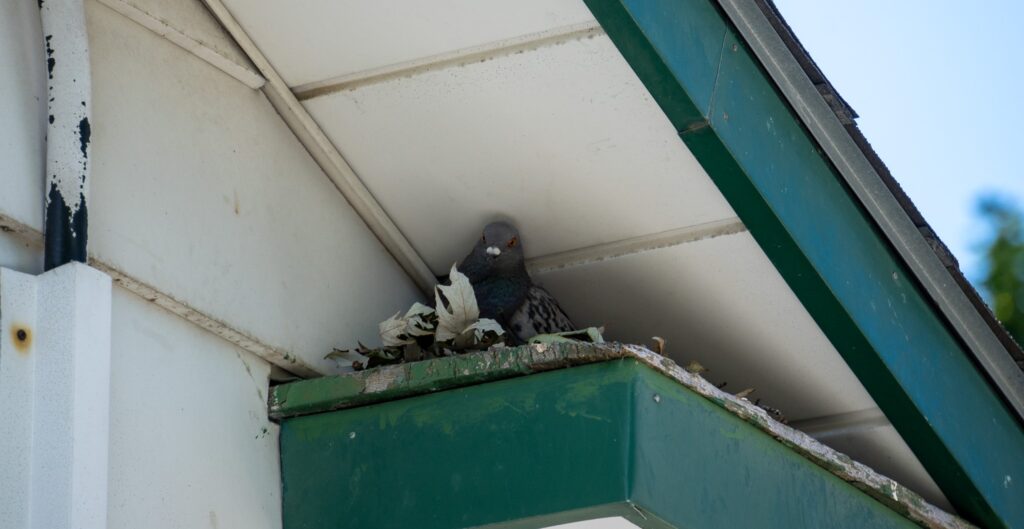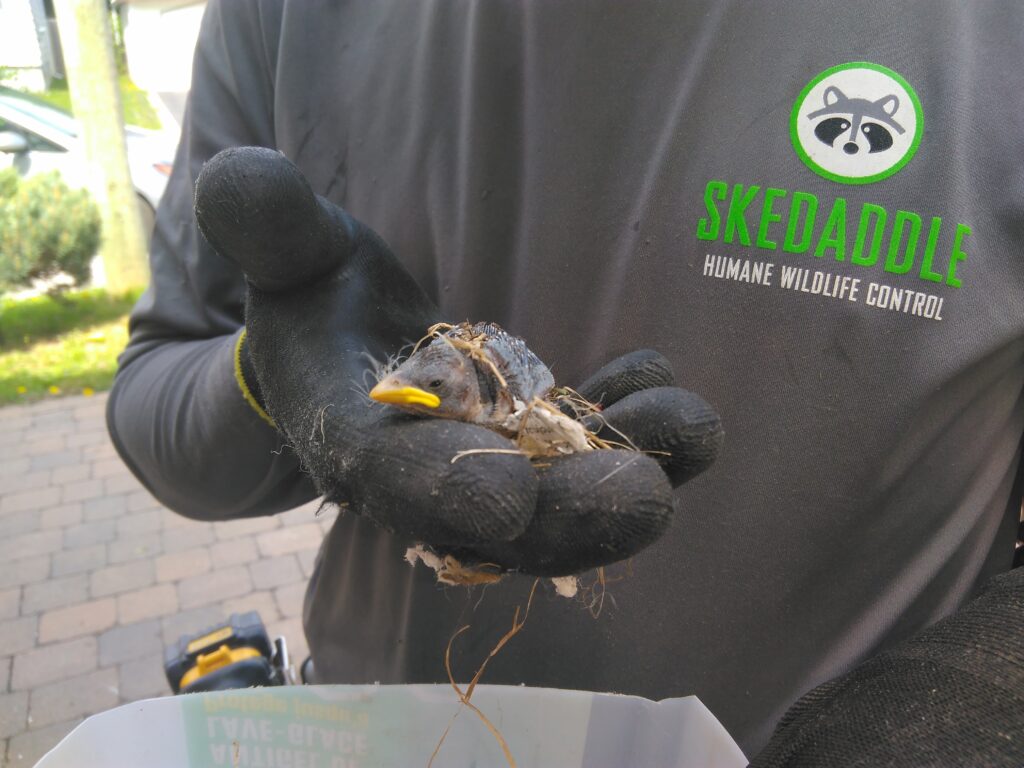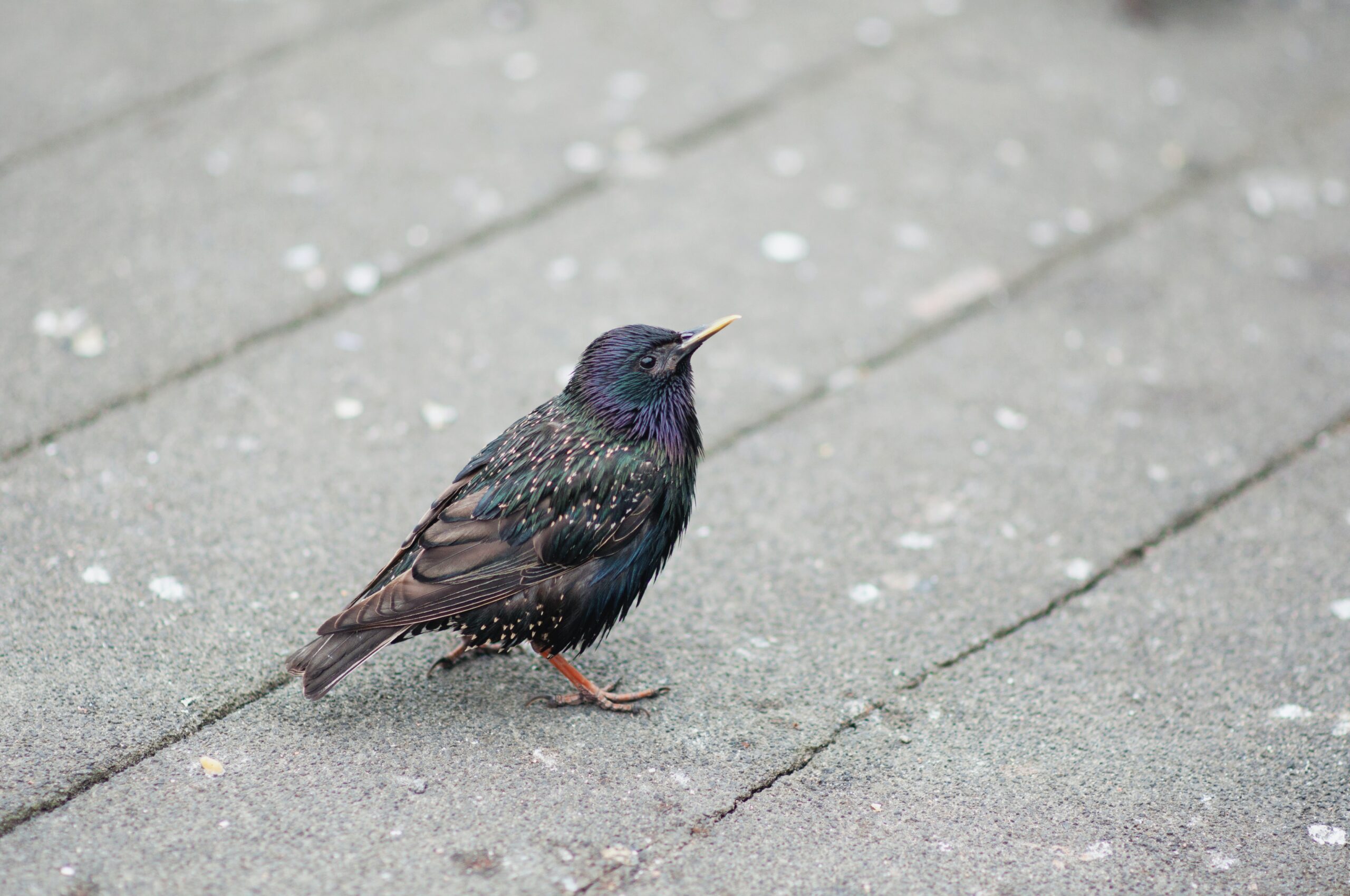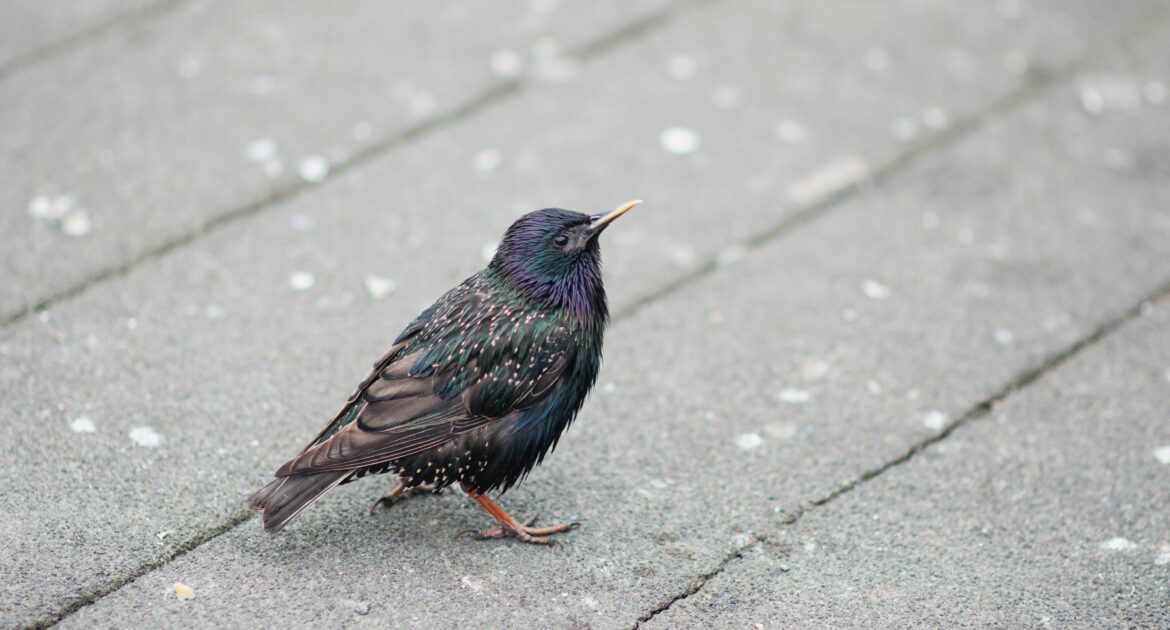Birds, with their melodies, might be charming visitors to your garden, but when they decide to make your roof their permanent residence, the situation can quickly turn from delightful to distressing. In Ottawa, the issue of birds nesting on residential roofs is not just a matter of aesthetics; it can lead to significant damage and nuisances. From blocked gutters causing water damage to the accumulation of droppings that can deteriorate roofing materials, the seemingly innocent act of nesting can have serious implications for homeowners.
Addressing this problem requires more than just a temporary fix; it requires a strategic approach to prevent it from recurring. This is where the expertise of Skedaddle Humane Wildlife Control becomes invaluable. Specializing in wildlife control in Ottawa, Skedaddle has developed effective and humane strategies to thwart birds from turning your home’s roof into their next nesting ground.
Our approach not only focuses on how to bird-proof your house but also emphasizes the importance of safeguarding your property from potential damage. By implementing our tried-and-tested bird-proofing tips and utilizing specific deterrents, you can maintain the integrity of your roof and ensure it remains free from unwanted avian guests.
Why Birds Nest on Roofs
Birds are resourceful creatures, constantly in search of the ideal spot to set up their nests. Their decision to choose residential roofs for nesting is influenced by several factors that offer them advantages in survival and rearing their young. Here, we outline the primary reasons behind their preferences and discuss some of the species that are often seen taking up residence in our homes.
- Safety From Predators: Elevated locations provide a sanctuary from ground-level predators. This elevation gives these animals a vantage point to monitor their surroundings for any potential threats, ensuring a safer environment for their chicks.
- Proximity to Food Sources: Being close to gardens, parks, and natural habitats means easy access to food. This convenience is crucial during the breeding season when adult birds need to find extra nourishment to feed their growing brood.
- Types of Birds: The species commonly found making homes on roofs include pigeons, sparrows, and starlings. Each of these birds has adapted to urban living, finding in our structures the nooks and crannies they need to support their nests.
By understanding these motivations, we can better approach the task of making our homes less inviting for these feathered architects. It’s about working with nature, rather than against it, to devise solutions that are effective yet respectful to the wildlife we share our environment with.
The Risks Associated with Bird Nests on Roofs
Birds choosing to reside on top of houses can lead to a multitude of problems beyond the initial charm of their presence. One significant concern is the obstruction of water flow caused by their nests in the drainage system. This blockage can lead to moisture accumulating, which in turn can weaken structural integrity and cause leakage issues.
Another critical issue is the direct harm to the shingles and other roofing materials. The acidity in their droppings is notorious for corroding certain substances, leading to costly repairs and replacements. Additionally, the buildup of these droppings is not just unsightly but can pose serious health risks due to the pathogens they contain.
Beyond these concerns, the presence of birds in large numbers can generate considerable noise, disrupting the tranquillity of a residential area. The debris from their feathers, leftover food, and nest materials may also accumulate, creating an unwelcome mess in and around properties.
Despite these challenges, it’s essential to approach the situation with sensitivity and care, seeking methods that ensure the safety of both the residents and our avian visitors.

Legalities and Ethics
In addressing the challenge of birds establishing habitats in residential areas, awareness of legal protections for various species is essential. Many species are safeguarded under local and national wildlife conservation laws, making it crucial to approach any deterrent or removal efforts with a clear understanding of these regulations. Our commitment to humane and lawful interventions ensures that while we protect our living spaces, we also respect the sanctity of nature’s creatures.
This regulatory framework typically outlines the permissible actions homeowners and wildlife specialists can take. For instance, while some methods of discouraging them from settling on properties are allowed, others, especially those causing harm to the birds or disrupting their habitats, may be prohibited. Therefore, it is imperative to consult with Skedaddle, who is well-versed in navigating these legal and ethical landscapes.
Highlighting the significance of ethical practices in managing bird populations around our homes is not just about adhering to laws; it’s about fostering a coexistent relationship with the natural world. By employing strategies that are respectful and considerate of wildlife, we not only solve the immediate concerns regarding property integrity but also contribute to broader conservation efforts.
The Problem with DIY
Venturing into the realm of self-implemented measures to discourage our feathered friends from taking up residence on our properties can present a range of obstacles. One primary concern is the potential for incorrect installation of deterrent devices. Without the nuanced understanding that professionals bring to the table, these well-intentioned efforts might not only fail but could inadvertently lead to vulnerabilities in our abodes, inviting more issues than they solve.
Many store-bought deterrents promise much but deliver little in terms of longevity and effectiveness. The harsh elements can quickly degrade these solutions, rendering them useless in a short amount of time.
Without the proper expertise, securing deterrents in a way that is both aesthetic and functional proves challenging. An incorrect setup might not only be ineffective but can also harm the aesthetic appeal of our residences.
DIY attempts without thorough research might disrupt more than just the targeted species, affecting local ecosystems in unforeseen ways. Ensuring that our actions don’t ripple negatively across the environment demands a level of expertise many homeowners might not possess.

5 Effective Bird-Proofing Strategies
In our quest to maintain the integrity of our homes while respecting the natural world, employing humane bird-deterrent strategies is key. These techniques not only safeguard our living spaces but also ensure the safety and well-being of our avian counterparts. Here’s a look at several compassionate and effective methods to discourage birds from settling in areas where they could cause harm or inconvenience.
- Reflective Objects: Hanging reflective tapes, CDs, or mirrors near potential roosting spots can disorient them by reflecting sunlight. This method is particularly effective in gardens or near windows and can reduce the likelihood of these animals approaching these areas.
- Decoy Predators: Installing fake predators, such as owl or hawk decoys, on or near rooftops can play on birds’ natural fear of these creatures. However, it’s crucial to move these decoys regularly to maintain their efficacy, as birds may otherwise recognize them as harmless.
- Netting: Placing netting around areas prone to bird habitation, such as eaves or balconies, can physically prevent them from accessing these spots. This solution is best for protecting specific zones without affecting the aesthetic of your property.
- Slope Boards: Installing slope boards on flat surfaces where birds typically land or nest can discourage settling by eliminating their ability to perch comfortably. This method is unobtrusive and can be tailored to match the exterior of any building.
- Sonic Devices: Employing ultrasonic sound emitters can deter these animals without causing them distress. These devices emit frequencies inaudible to humans but uncomfortable for birds, encouraging them to seek more peaceful areas. Sonic devices are ideal for larger properties or open areas where other methods may be impractical.
In our ongoing efforts to live harmoniously with nature, these humane bird-deterrent strategies present effective solutions for managing avian activity around your residence. By choosing methods that respect the well-being of wildlife, we contribute to a more sustainable coexistence, ensuring the preservation of our homes and the natural beauty that surrounds them.
Maintaining a Bird-Free Roof
To preserve the sanctity of our living spaces without disrupting the natural balance, it’s crucial to keep our protective measures against unwelcome avian guests as efficient as the day they were installed. A combination of vigilance and proactive maintenance can serve as the backbone of a lasting sanctuary, free from the concerns of uninvited nesting or the potential deterioration of our domiciles.
Regular monitoring and upkeep of deterrent devices play a significant role in their sustained effectiveness. Over time, environmental factors such as weathering or debris accumulation can compromise the functionality of these systems, necessitating a routine check to clear any blockages or to repair damage. This ensures that the methods employed continue to offer the maximum protection needed to safeguard our residences.
Equally important is the practice of arranging periodic assessments with experts in habitat management. These specialists bring a wealth of knowledge and can offer insights into the latest advancements in repelling technologies or strategies. Their guidance can help us refine our approach, ensuring it remains both compassionate and compliant with current standards. This ongoing partnership is vital in adapting our strategies to remain one step ahead of potential challenges, keeping our homes serene and intact.
The Humane Touch
In light of the challenges and complexities surrounding DIY bird-proofing methods, the importance of professional wildlife control in Ottawa cannot be overstated. Specialist interventions not only guarantee the protection of our homes from potential damage and health hazards but also ensure the humane treatment of wildlife. By choosing professional solutions, like Skedaddle Humane Wildlife Control, homeowners can avoid the pitfalls of ineffective materials, improper installation, and unintended consequences on local ecosystems.
Our services stand out as a trusted provider of effective and ethical wildlife control solutions. With a focus on humane and innovative strategies for bird-proofing, we offer homeowners peace of mind, knowing that their methods are both environmentally responsible and effective in preventing these animals from nesting and causing damage. Whether it’s how to bird-proof your house or how to prevent birds from nesting, our expertise ensures that your wildlife control measures are in compliance with the latest environmental standards and best practices.
For those looking to safeguard their homes while respecting the balance of nature, requesting an estimate from Skedaddle is the first step toward achieving a bird-free sanctuary. Learn more about our tailored solutions and take proactive steps to protect your home and the local wildlife.
Request an estimate to learn more about our wildlife control solutions in Ottawa and discover how we can help you maintain a harmonious and secure home environment.




